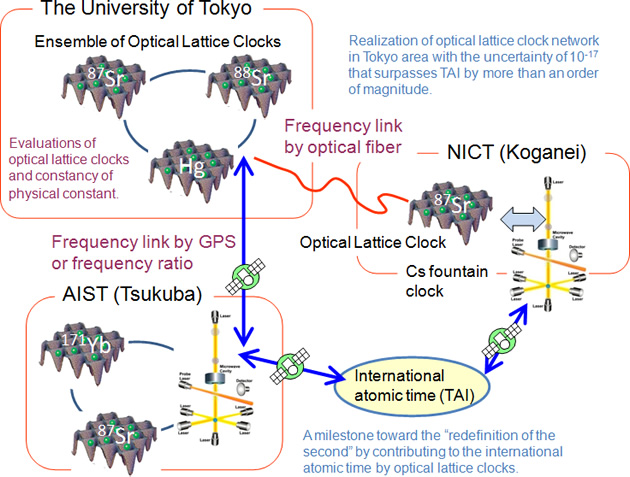We develop "optical lattice clocks" to clarify their effectiveness as the next generation time-frequency standard, whose uncertainty is expected to improve that of the current international atomic time (TAI) by 2-3 orders of magnitude. In particular, we investigate applications of such highly accurate time standards by establishing highly stable time-frequency links to compare two remote clocks of tens of km apart. The general relativistic effect due to the gravity significantly affects such clock comparisons, which may lead to novel applications of clocks to search precise geoid height and the relativistic geodesy. We thus hope to demonstrate possible impact and applications of these novel quantum standards that allow us searching hitherto unexplored space-time features.




